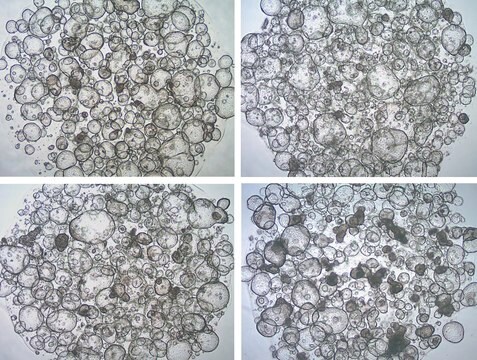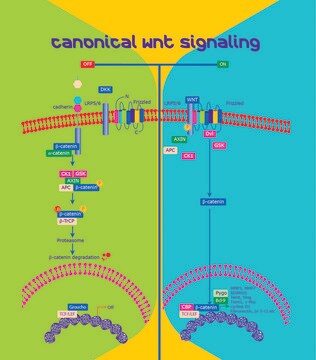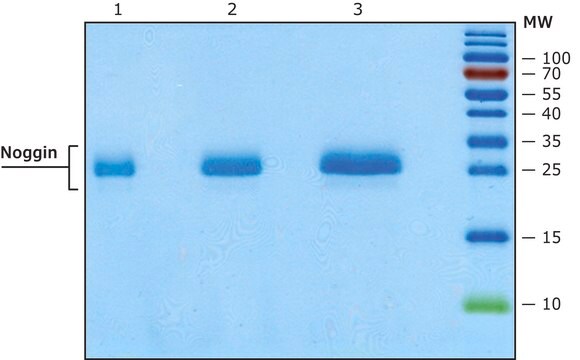SCC111
R-Spondin1 expressing 293T Cell Line
Human
Synonym(s):
RSPO1-expressing 293T cells
About This Item
Recommended Products
Product Name
R-Spondin1 expressing 293T Cell Line, The R-Spondin1-Expressing 293T cell line produces RSPO1, a critical protein used to establish 3D organoid cultures from stomach, small intestine, colon, pancreas, and liver sources.
biological source
human
Quality Level
shipped in
ambient
General description
The 293T cell line is stably transfected to express mouse R-spondin1 protein tagged with N-terminus HA epitope tag and C-terminus mouse IgG2α Fc region. R-Spondin1 expressing 293T cell line can be used to produce either purified Rspo1 or Rspo1 conditioned media. The FC region and HA tags enable ease of purification and characterization. Cell line is not the published cell line from the Kuo lab, but rather a related cell line developed in the same lab using the reference protocol.
Cell Line Description
Application
Cell Culture
Quality
• Cells are tested negative for HPV-16, HPV-18, Hepatitis A, B, C, Herpesvirus type 6, 7, 8 and HIV-1 & 2 viruses by PCR.
• Cells are negative for mycoplasma contamination.
• Each lot of cells is genotyped by STR analysis to verify the unique identity of the cell line.
Storage and Stability
Disclaimer
Storage Class Code
10 - Combustible liquids
WGK
WGK 1
Flash Point(F)
Not applicable
Flash Point(C)
Not applicable
Certificates of Analysis (COA)
Search for Certificates of Analysis (COA) by entering the products Lot/Batch Number. Lot and Batch Numbers can be found on a product’s label following the words ‘Lot’ or ‘Batch’.
Already Own This Product?
Find documentation for the products that you have recently purchased in the Document Library.
Customers Also Viewed
Articles
rganoid culture products to generate tissue and stem cell derived 3D brain, intestinal, gut, lung and cancer tumor organoid models.
Our team of scientists has experience in all areas of research including Life Science, Material Science, Chemical Synthesis, Chromatography, Analytical and many others.
Contact Technical Service









